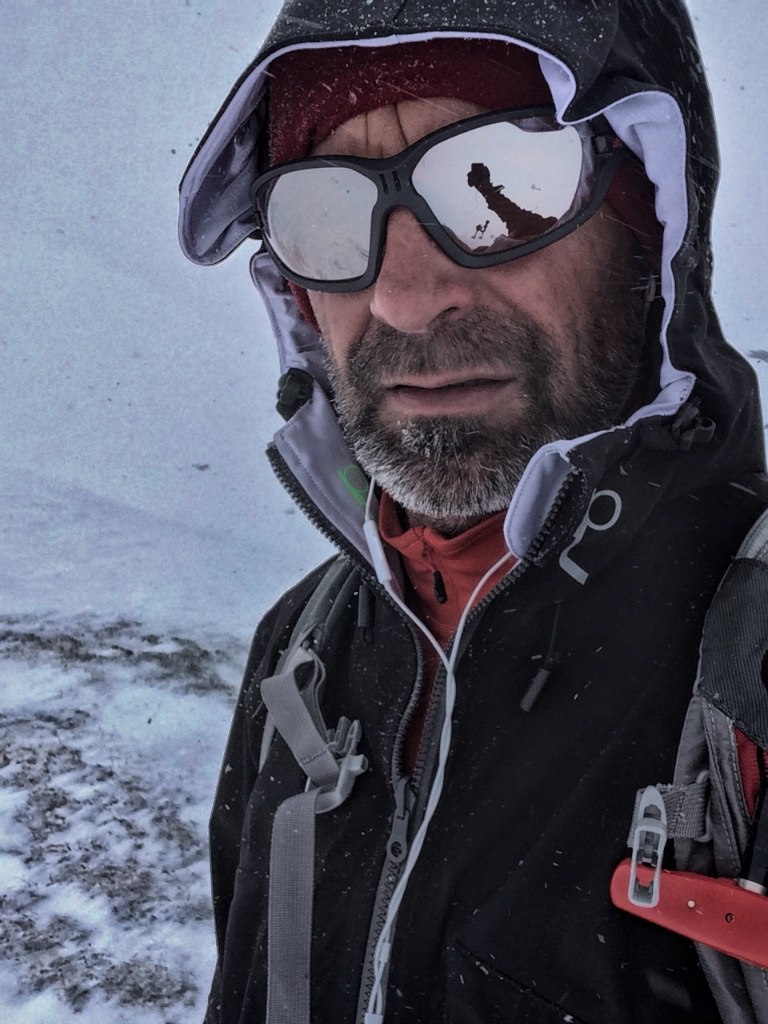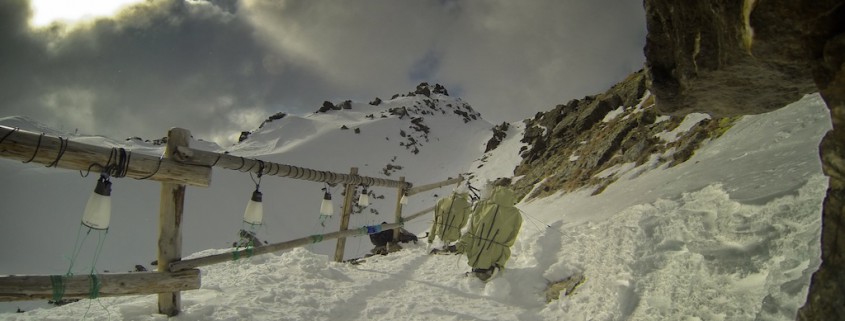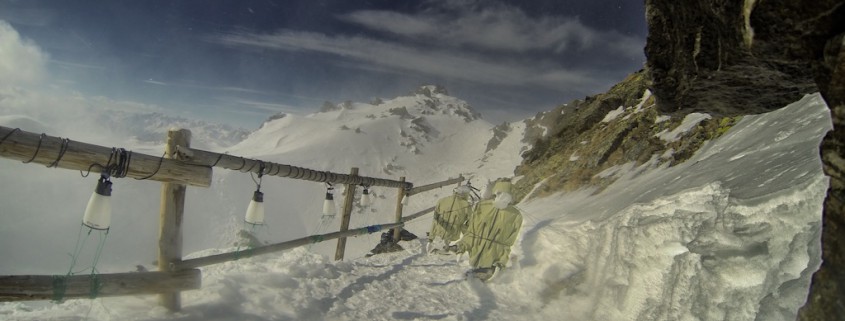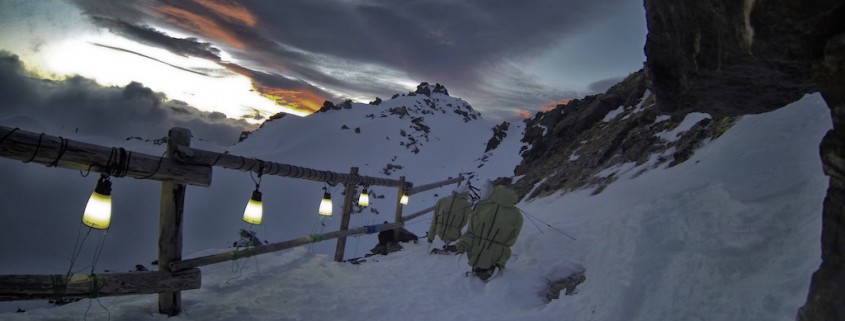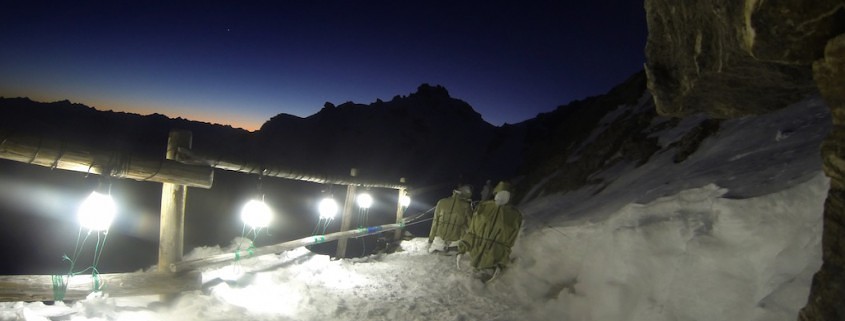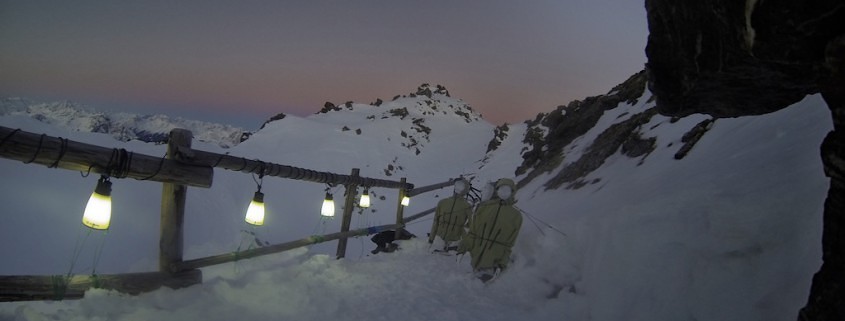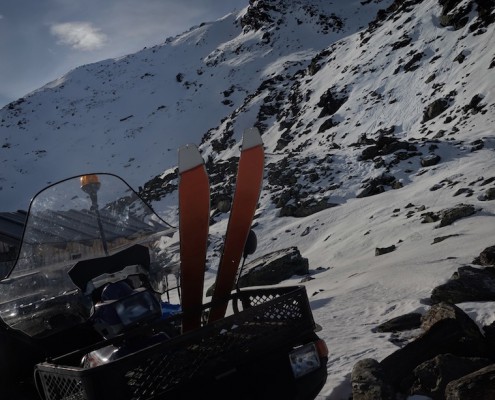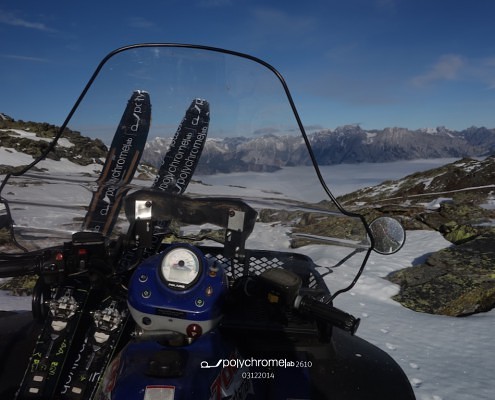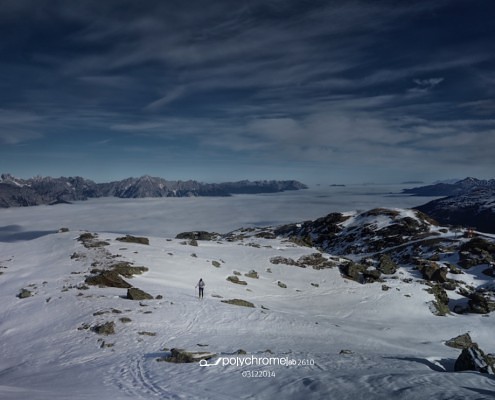The Snowstorm and the Jacket
Wearing Outdoor Jackets the Right Way on a Skitour
Marc is an outdoor sportsman. He searches for sports experiences all year long and doesn’t want to get sick. So he aims for wearing outdoor jackets the right way. He loves extreme conditions and that’s why he’s happy about heavy snowfalls around Easter to go skiing: in about a few minutes he looks up his destination, equips his skis with skins and starts the car.
There Marc notices that snowfalls are getting stronger and temperatures are sinking. Because of effort on the way up he chooses to wear a baselayer and a polychromelab Alta Quota 3 layer jacket on the cooling silver side. Marc won’t freeze this way, because at his skitour to the top the jacket keeps his body warmth inside the jacket despite high breathability of the inner layer membrane. The result is that on one hand Marc doesn’t have to sweat and on the other doesn’t become hypothermic.
After all his efforts he doesn’t get rewarded at the peak: the snowstorm gets heavier and heavier and he decides to wait for a clear sky. Marc easily reverses his Alta Quota jacket to warming black side and additionally puts an a fleece jacket underneath it. But weather won’t get better and his body emits a lot of warmth. So he’s happy about choosing three different layers of gear and making comfortably some pictures.
Half an hour or so later there is still no silver lining. Marc doesn’t care and goes downhill skiing in a snowstorm wearing outdoor jackets the right way this day.
polychromelab concept store

